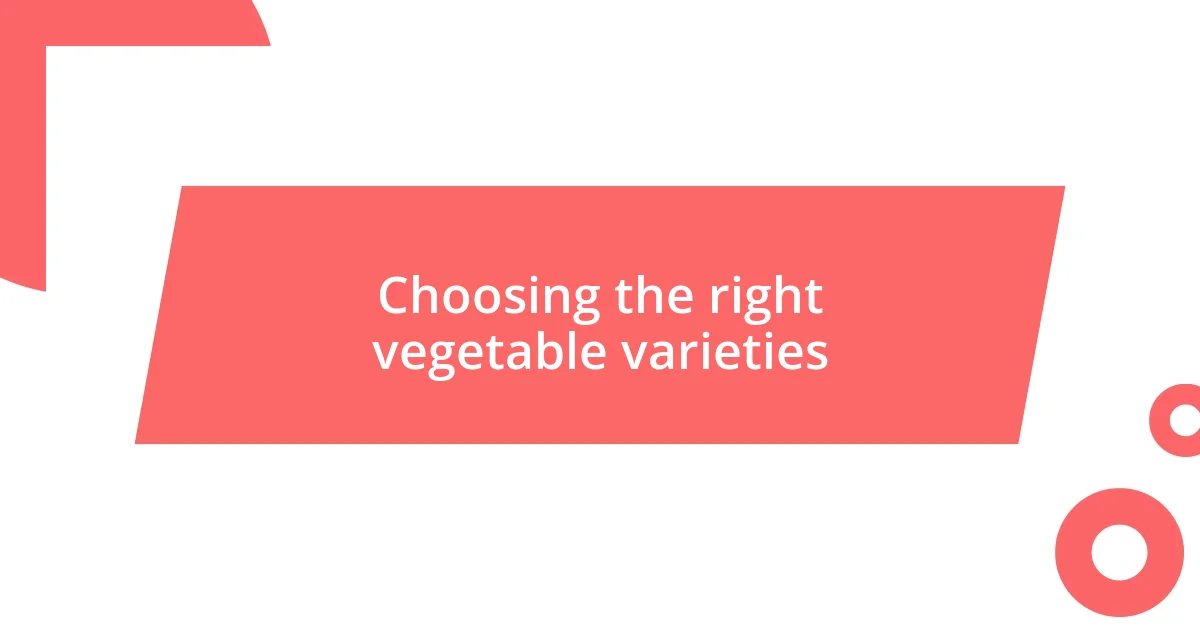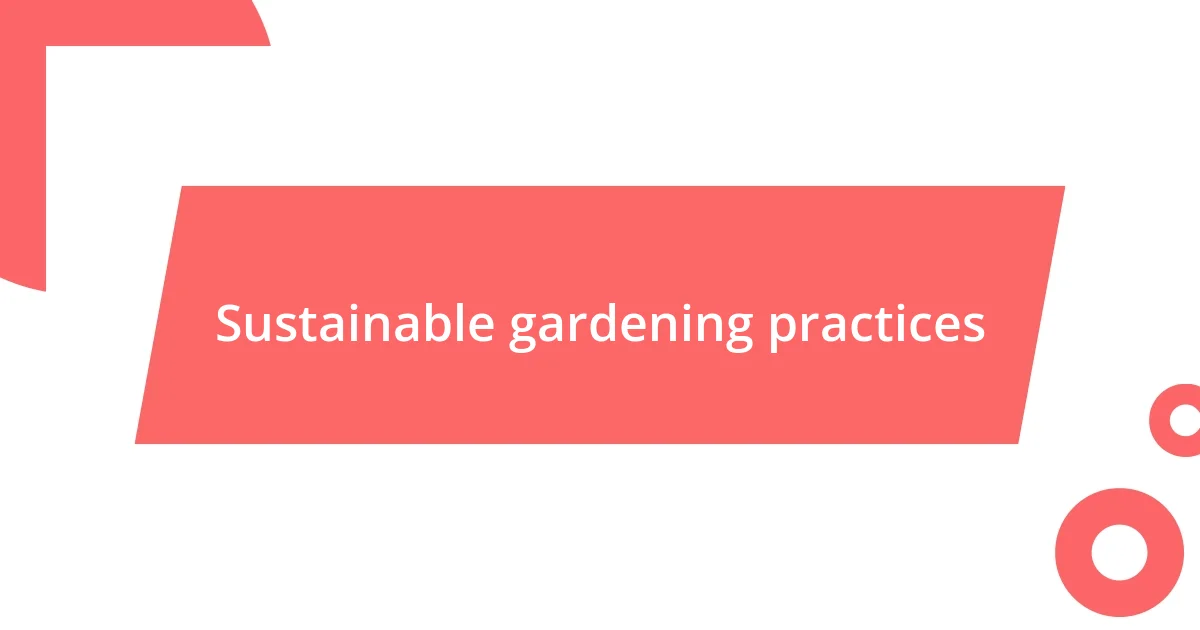Key takeaways:
- Implementing companion planting and vertical gardening techniques enhances plant growth, pest control, and overall garden aesthetics.
- Soil quality is crucial for a successful vegetable plot, emphasizing the importance of nutrient richness, moisture retention, microbial life, and pH balance.
- Embracing seasonal planting strategies and biodiversity, such as succession planting and using diverse vegetable varieties, increases yields and supports a resilient garden ecosystem.

Unique features of my plot
One unique feature of my vegetable plot is the way I’ve arranged everything based on companion planting principles. For instance, having tomatoes growing alongside basil doesn’t just look good; it enhances their flavors and keeps pests at bay. Have you ever noticed how certain plants seem to thrive next to each other? It’s like they’re having a little garden party, supporting one another through every season.
Another standout aspect of my plot is the use of vertical gardening techniques. I love seeing cucumbers climbing trellises while benefiting from better air circulation. It’s mesmerizing to me to watch them grow upwards instead of sprawling across the ground. Have you ever tried this? The added space creates a more open feel in the garden, which I find incredibly inviting.
Lastly, my commitment to organic practices sets my plot apart. I’ve learned to use natural pest control methods, like introducing ladybugs. It’s both fascinating and satisfying to witness how these tiny helpers can turn the tide in my favor. When was the last time you felt truly connected with nature in your gardening efforts? I can honestly say that the more I embrace these organic strategies, the more thriving and resilient my garden seems to become.

Importance of soil quality
Soil quality is the foundation of any successful vegetable plot, and I can’t emphasize enough how crucial it is. When I started my garden, I was astounded by how the type of soil I used dramatically affected my plants. Initially, I overlooked this aspect, thinking any dirt would do, but I quickly learned that rich, organic soil leads to stronger plants, greater yields, and a more vibrant garden.
Here are some key aspects I’ve discovered about soil quality:
- Nutrient-Rich Soil: Healthy soil is packed with essential nutrients that directly feed my plants. I often add compost, which enriches the soil and enhances its texture.
- Water Retention: Good quality soil has the right balance of sand, silt, and clay, allowing it to retain moisture perfectly, ensuring my veggies don’t suffer during dry spells.
- Microbial Life: I’ve learned that soil is a universe of its own, teeming with beneficial microbes. These little helpers break down organic matter, making nutrients accessible to my plants.
- pH Balance: The right pH level can drastically affect plant growth. Investing time in testing my soil has helped me adjust it, ensuring my tomatoes and peppers thrive.
Reflecting on these aspects makes me excited for every planting season. I remember the first time I really dig into the soil, feeling its richness between my fingers. It reminded me that my garden is alive, and the better the soil, the more vibrant and plentiful the harvest. It’s like nurturing a relationship; the more attention and care I give, the more it blossoms.

Choosing the right vegetable varieties
Choosing the right vegetable varieties can be pivotal in making your garden truly thrive. I recall the excitement when I decided to experiment with heirloom tomatoes. The burst of flavors was a revelation! Unlike those ubiquitous store varieties, heirlooms have personalities; their colors and tastes can vary wildly. Have you ever bitten into a warm, sun-ripened tomato straight from the vine? It’s a game changer, and matching the right varieties to my taste buds has made gardening even more fulfilling.
And let’s not overlook the importance of climate adaptability. When I first started, I went with whatever seemed popular, which led to several disappointments. For example, my attempt at growing bell peppers in early spring didn’t go well; they simply didn’t like the lingering chill in the air. Since then, I’ve researched varieties that suit my region’s climate, and the success has been noticeably uplifting. I remember the joy of harvesting sun-loving peppers in mid-summer—what a contrast to that early failure! The right choices can turn frustrations into triumphs, making the garden feel more like a sanctuary.
In my experience, I’ve found that diversity in vegetable varieties adds a layer of resilience. Growing a mix means if one type struggles, others often flourish. I once faced an unexpected pest issue with my zucchini, but luckily, my kale and chard were unharmed. Observing my diverse plot reminded me of a well-balanced team; each plant plays its role, contributing to the overall success of the garden while making it visually captivating. Embracing variety isn’t just about aesthetics; it’s about creating an ecosystem that supports all the inhabitants.
| Vegetable Variety | Special Features |
|---|---|
| Heirloom Tomatoes | Unique flavors and colors, rich history, often more nutrient-dense. |
| Bell Peppers | Need warmth to thrive; varieties vary in heat levels and colors. |
| Kale | Highly nutritious, versatile in cooking, resilient to colder temperatures. |
| Zucchini | High yield; needs space but often struggles with pests. |

Sustainable gardening practices
When I think about sustainable gardening practices, I can’t help but feel a sense of responsibility towards the environment. One practice I’ve adopted is companion planting, which makes a world of difference in my vegetable plot. For instance, planting marigolds alongside my vegetables has not only deterred pests but also attracted beneficial insects. Have you ever noticed how certain plants seem to thrive better when grown together? It’s almost like they communicate!
Another critical aspect of sustainability is water conservation. I remember the first time I set up a rain barrel; it felt like a small victory for the planet! Collecting rainwater has significantly reduced my reliance on the hose during those scorching summer days. I believe every drop counts, and using a drip irrigation system has helped me target the roots of my plants more efficiently. What a fantastic way to maximize water use and minimize waste!
I also embrace organic practices to keep my garden healthy and vibrant. For example, I’ve experimented with homemade compost and learned just how rewarding it is to recycle kitchen scraps and yard waste. The first time I sprinkled homemade compost around my plants, I felt a sense of achievement, knowing I was nourishing my soil naturally. It’s a simple yet powerful cycle that reminds me how connected we are to the earth. How about you—have you ever tried making your compost? The joy of seeing your efforts transform into rich, dark soil is truly unparalleled!

Pest management techniques
Managing pests in a vegetable plot can feel overwhelming at times, but I’ve found that a few simple techniques can make a world of difference. One approach that has worked for me is introducing beneficial insects, like ladybugs, into the mix. I remember the first time I spotted them feasting on aphids; it felt like I had found nature’s little army right in my garden! Have you ever noticed the impact these tiny helpers can have? They not only reduce pest populations but also create a sense of balance in the ecosystem I strive to cultivate.
Another technique I’ve embraced is crop rotation, which I initially learned from a gardening workshop. I used to plant the same crops in the same spots each year, not realizing it made my vegetables more susceptible to pests and diseases. Once I started rotating my plants, I observed a significant decrease in pest issues. It’s fascinating how changing the location of my plants can disrupt pest life cycles. Have you tried this method? It can be surprisingly rewarding to see your plants thrive when given a fresh start each season.
Lastly, I occasionally turn to homemade remedies when I’ve noticed pests encroaching on my beloved veggies. One of my favorites is a simple garlic spray; just blending garlic with water creates a solution that helps repel unwanted visitors. The first time I sprayed it on my vulnerable seedlings, I felt empowered knowing I was taking a natural approach to safeguard them. Seeing those plants flourish afterward reinforced my belief in the connection between intuition and gardening. What about you—have you ever concocted your own pest control solutions? It’s remarkable how a bit of creativity can protect your hard work.

Seasonal planting strategies
When it comes to seasonal planting strategies, timing truly is everything. I remember the thrill I felt last spring as I planted my first round of cool-season crops like lettuce and peas. It was like unwrapping a gift—I couldn’t wait to see them sprout! How about you? Have you ever felt that excitement when marking the gardening calendar for the planting season? Knowing your area’s frost dates allows you to maximize your vegetable yield and can truly make a difference.
As the seasons shift, I’ve learned to embrace succession planting. This technique involves staggering crop plantings—like sowing carrots every couple of weeks. I recall one year, my garden was overflowing with fresh carrots, and I was amazed at how a simple adjustment in planting could prolong the harvest. Do you think you could benefit from planting in waves? I find that it keeps my kitchen stocked with fresh veggies, and the joy of culinary creativity flows as I experiment with different recipes throughout the season.
Finally, I can’t stress the importance of understanding your soil and its seasonal needs. After years of trial and error, I finally grasped the significance of enriching the soil with specific nutrients before planting each season. When I tested my soil and adjusted the pH, the transformation in my plants was unmistakable. Have you ever considered how soil health impacts your garden? Fertilizing based on seasonal requirements isn’t just a chore; it’s an investment in the success of your plants. Seeing them thrive as a result of this effort makes every bit of preparation worthwhile.

Benefits of companion planting
Companion planting is one of those delightful tricks that really brings the garden to life. For example, when I paired my tomatoes with basil, it felt like magic. Not only did it enhance the flavor of the tomatoes, but I noticed a significant reduction in pests. Isn’t it incredible how two plants can foster such a beneficial relationship? It’s like they’re having a conversation beneath the soil, supporting one another in their growth.
I remember experimenting with marigolds alongside my vegetable plants. Initially, I was just trying to add a splash of color to my garden beds. However, I soon discovered that marigolds deter certain nematodes and insects. Witnessing that transformation, I realized how valuable it is to choose companions wisely. Have you thought about the plants you pair together? Sometimes, a simple addition can lead to unforeseen benefits that enhance your entire garden ecosystem.
Another aspect of companion planting that I’ve adored is how it encourages biodiversity. I enjoy the vibrant mix of plants, and I’ve come to appreciate each plant’s role in the garden’s overall health. For instance, integrating legumes helps fix nitrogen in the soil, benefiting neighboring plants. This interconnectedness not only promotes growth but also creates a sense of harmony that I strive for in my gardening practice. How has biodiversity played a role in your garden experiences? Every bit of variety I introduce creates a richer, more rewarding gardening experience.












